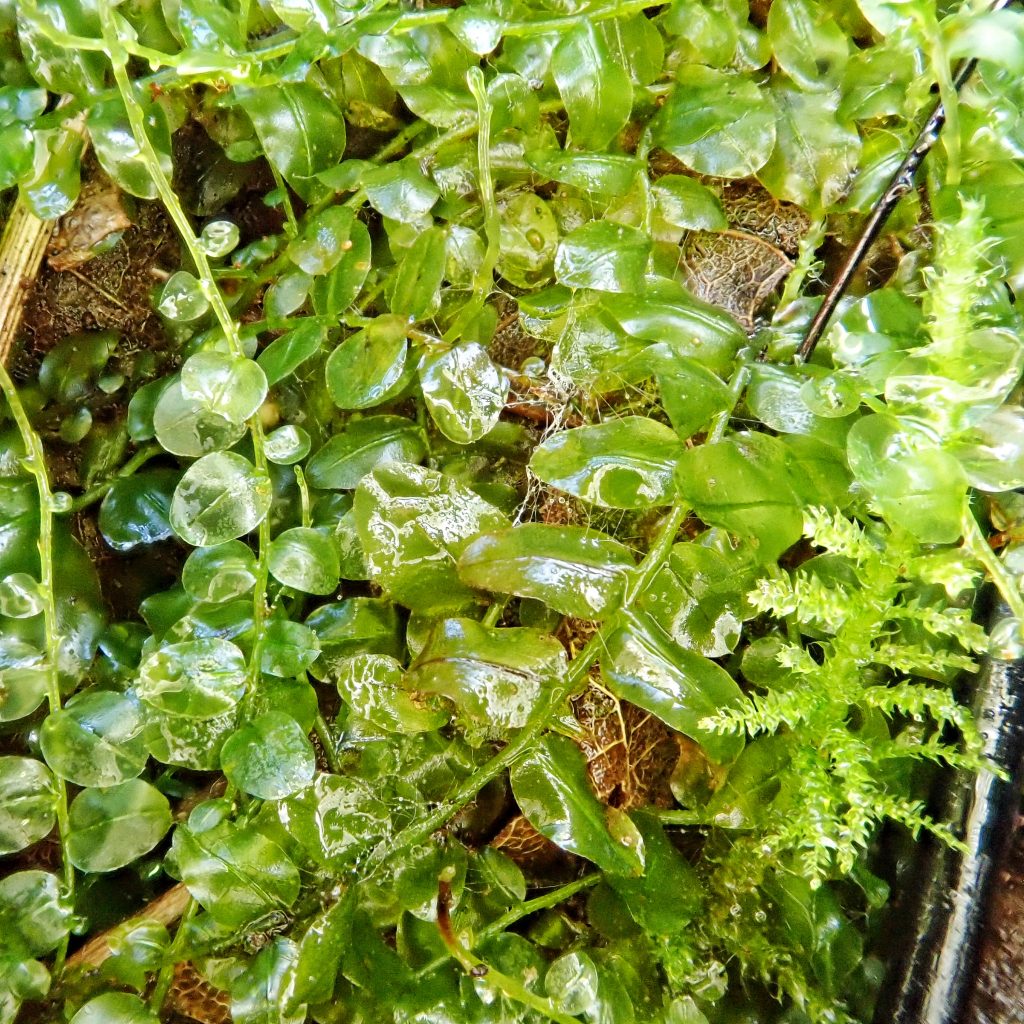
This is the first post about the denizens of a basaltic cliff band above Lake Merwin in Clark County, Washington. It gets about 6 feet of rain per year, which is almost half again as much as Vancouver, Washington (25 miles to the south), due to the ‘wringing’ effect of the surrounding hills. It faces more or less north, and probably only gets a few hours of sunlight in the early morning and late afternoon of sunny summer days, and none at all from September to April.
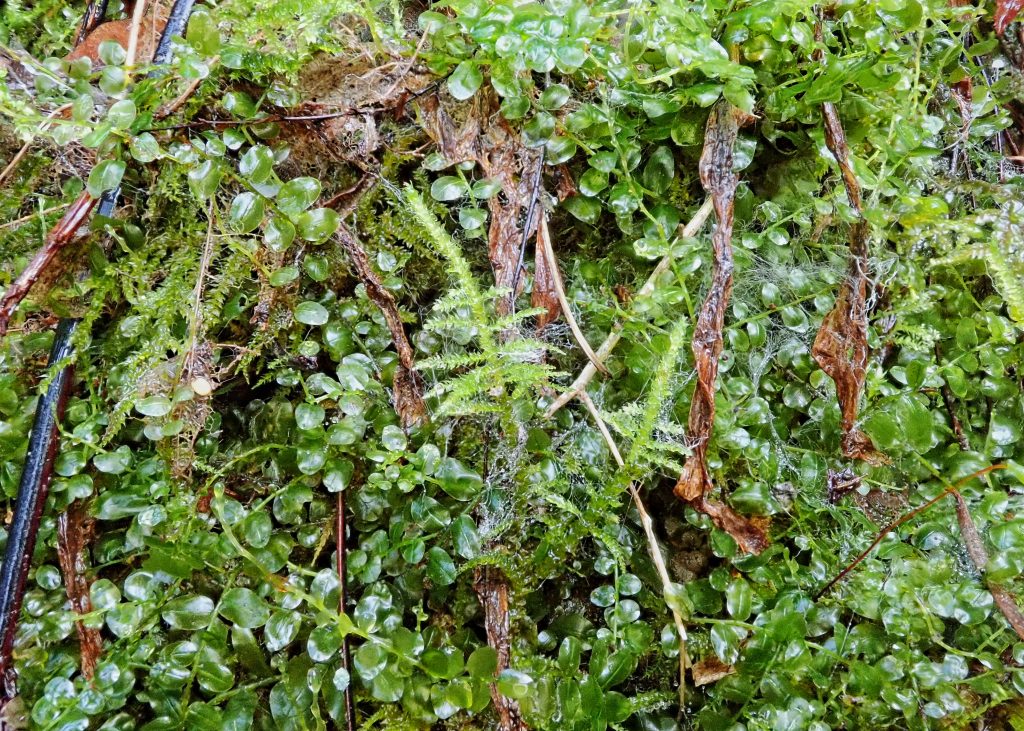
There is nothing spectacular about this cliff, and from preliminary investigation I’d guess it wasn’t unusually diverse. Which doesn’t mean that it’s not diverse! At first look, on a day in mid autumn, I easily found over 20 species of plants, 4 different lichens, an amphibian, and 2 invertebrates. So I will be cataloguing everything I can find there over the next several months. I’ll be very surprised if the number of life forms isn’t well over 50.
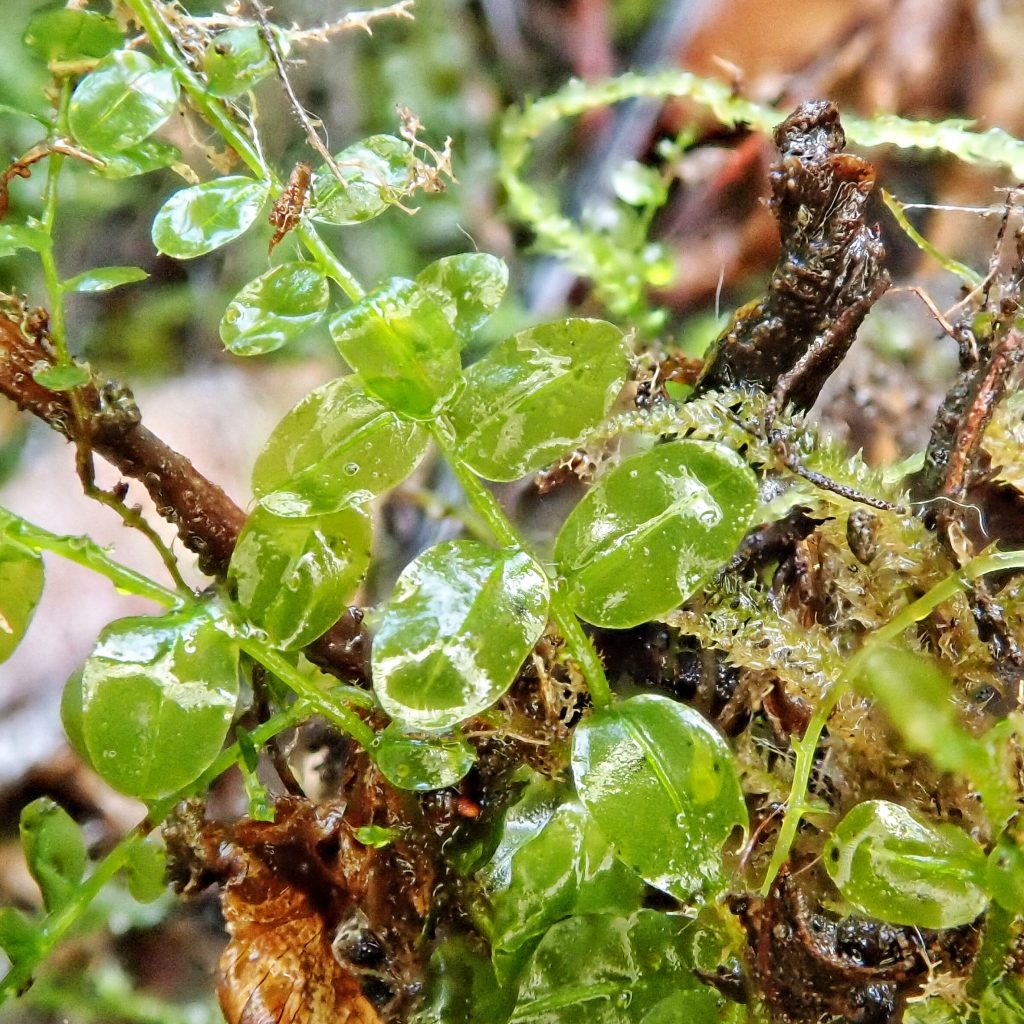
This little clump of Plagiomnium rostratum was found on a small, soil covered ledge near the bottom of the cliff. I almost missed it because it was mostly covered with large, fallen maple leaves, but as soon as I saw this low mat, with many interlaced, prostrate stems, and widely spaced, ovate leaves, I realized it was new to me.
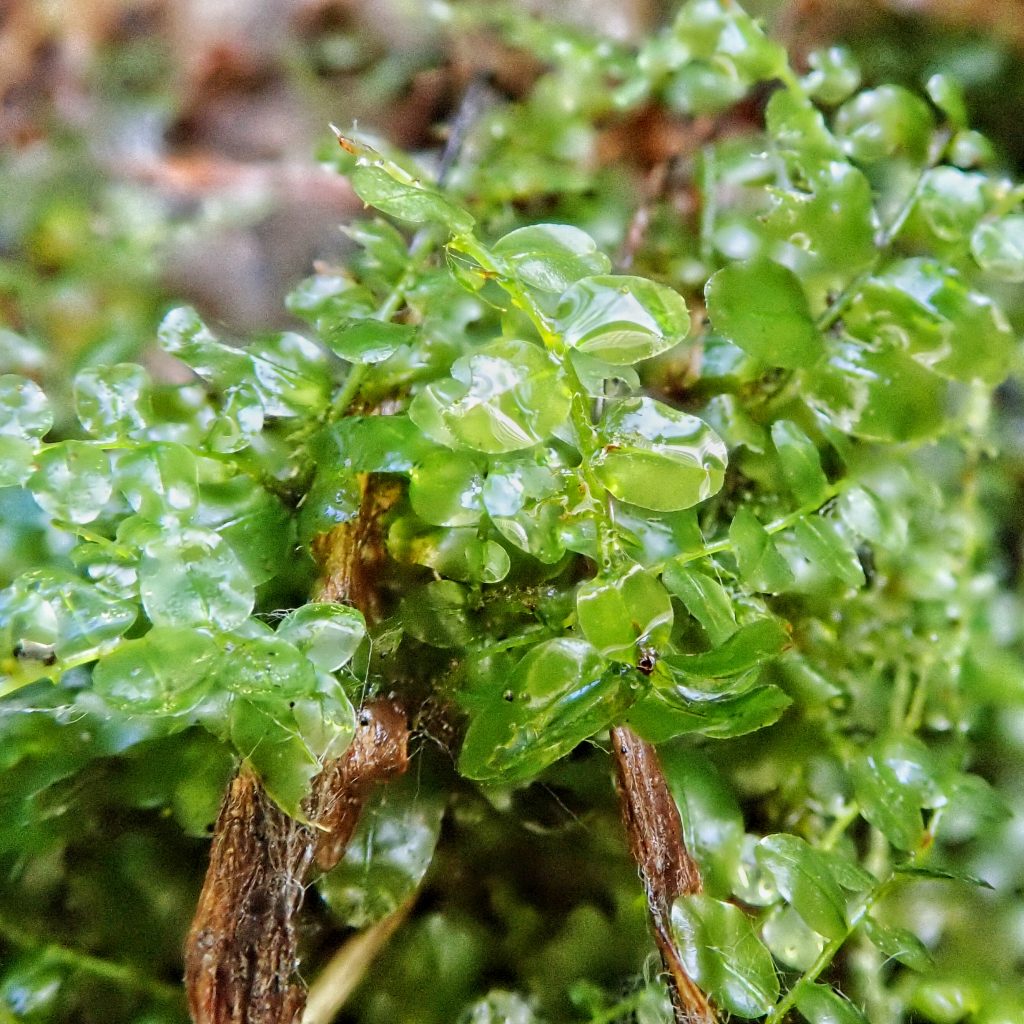
As soon as I got a piece of it under the stereoscope I saw the toothed margins, which ruled out Rhizomnium, and that the teeth were single, eliminating the double-toothed leaves of Mnium. I also noted that the leaf cells were not elongated, so it wasn’t a Roellia sp. But then I made my mistake.
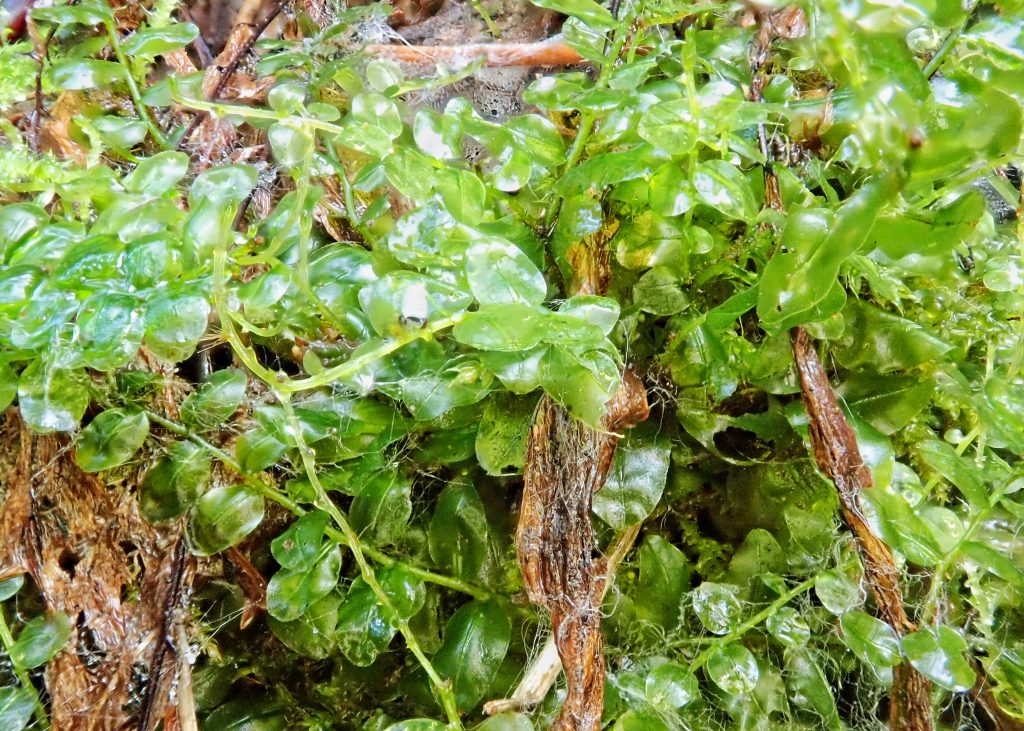
I was using my favorite moss book, ‘Common Mosses of Western Oregon and Washington’ (McCune and Hutten; 2018) to key this, because the keys are fairly straightforward and the photos illustrating the characteristics are excellent. But it only includes the common mosses, and thus excludes about 2/3 of the mosses in this region. This is a common situation regarding field guides and other laymen’s books on species identification: You can never be sure what all of your options are. In the case of this moss I forgot that vital wisdom, and came to the mistaken conclusion that it was Plagiomnium medium, neglecting even to look into how many other Plagiomnium sp. were in our area that were not in the book.
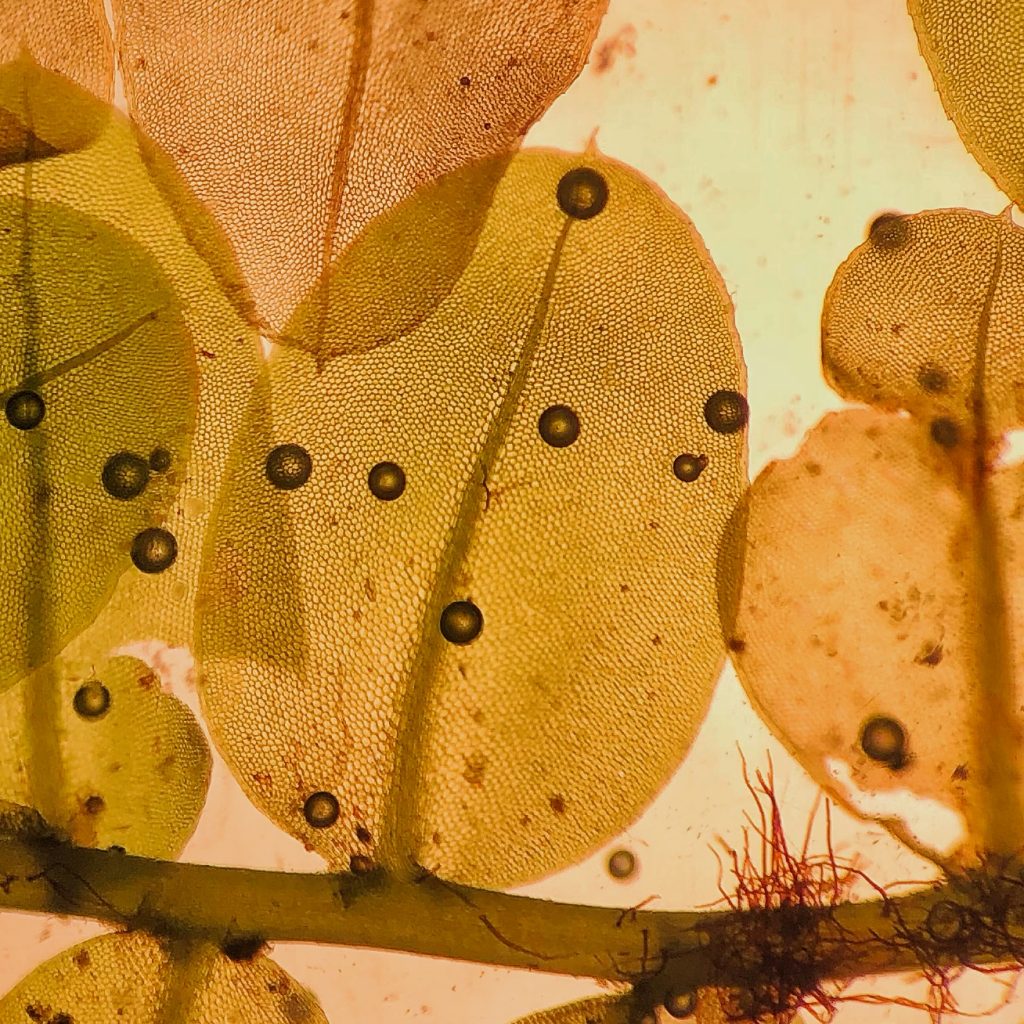
But, because I am not a complete fool (some parts are missing), I sent these photos off to be vetted by the eminent bryologist Terry McIntosh, and he immediately disabused me of the notion that it was P. medium, asked for some further clarifying photos, and pronounced it Plagiomnium rostratum, a less common, but far from rare, species of moss. Thank you Terry, and hopefully I won’t make that mistake again anytime soon.
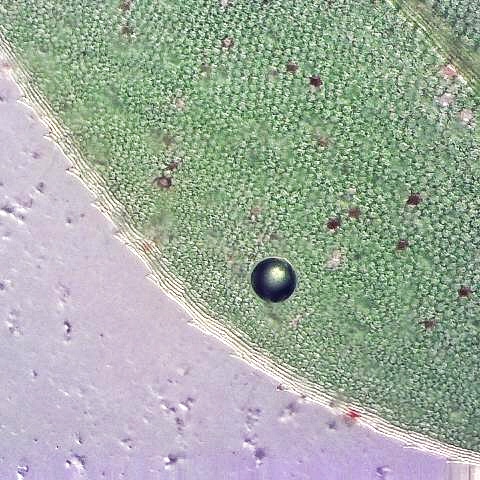
Description-Low growing moss with small, widely spaced (for a moss), toothed leaves that do not extend down the stem (not decurrent). If you can find it with sporophytes look for theming, pointed beak (rostrata) sticking up straight from the top of the capsule. Most other Plagiomnium sp. lack this feature. Other salient identification details require a microscope, a good key (this is a very good one here), a glossary, a lot of patience, and a friend who is a bryology expert to tell you that you are wrong, and why.
Similar species– Rhizomnium sp. have smooth leaf margins, Mnium sp. have paired teeth, Roellia sp. have elongated leaf cells, and most other Plagiomnium have decurrent leaf bases.
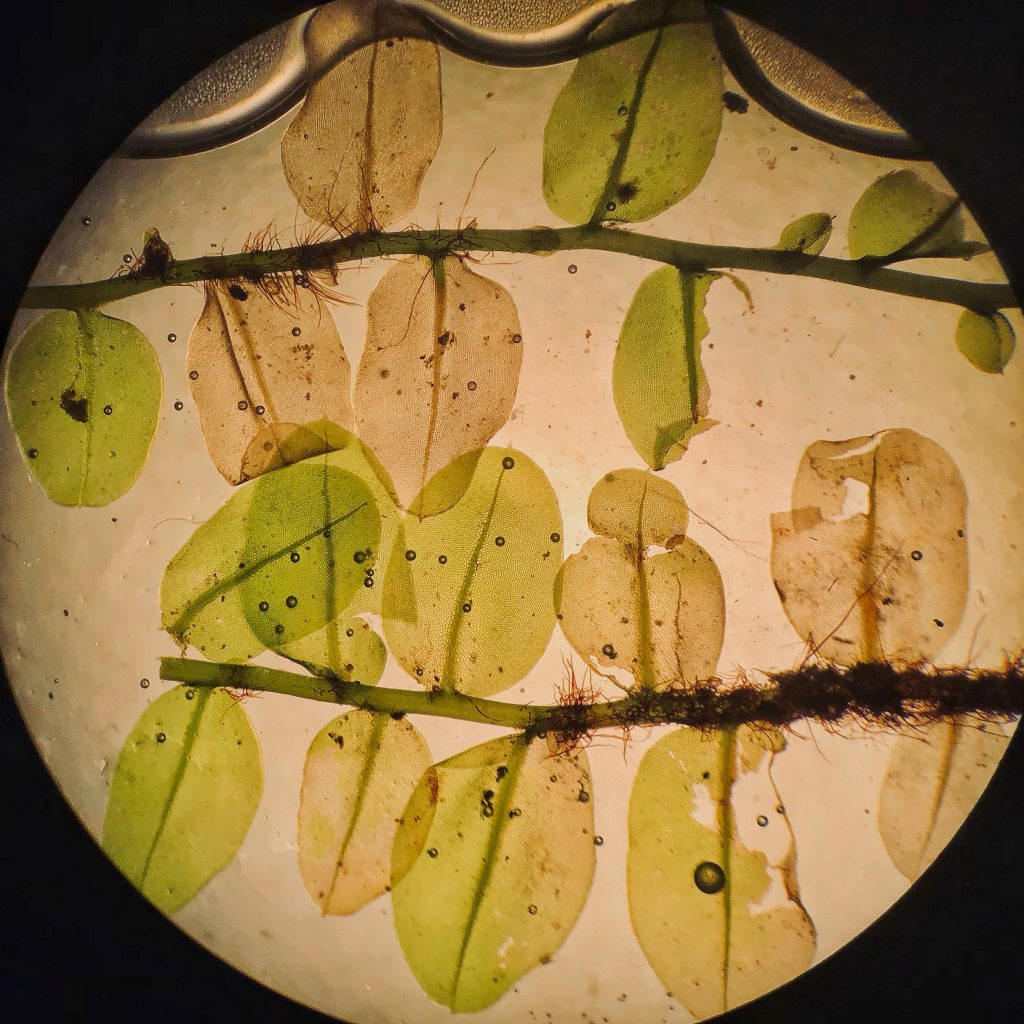
Habitat– On shaded rock, soil over rock, in damp areas at low to middle elevations.
Range– Region wide in appropriate habitat
Reproductive timing– Sporophytes formed in late spring, early summer
Etymology of names– Plagiosis is Greek for oblique, and mnion is Greek for moss. According to Terry McIntosh/Steven Newmaster in ‘Flora of North America, vol 28’, this refers to the arching, sterile stems frequently found in this genus. And rostratum is Latin for beaked, referring to the beak atop the operculum of the capsule.
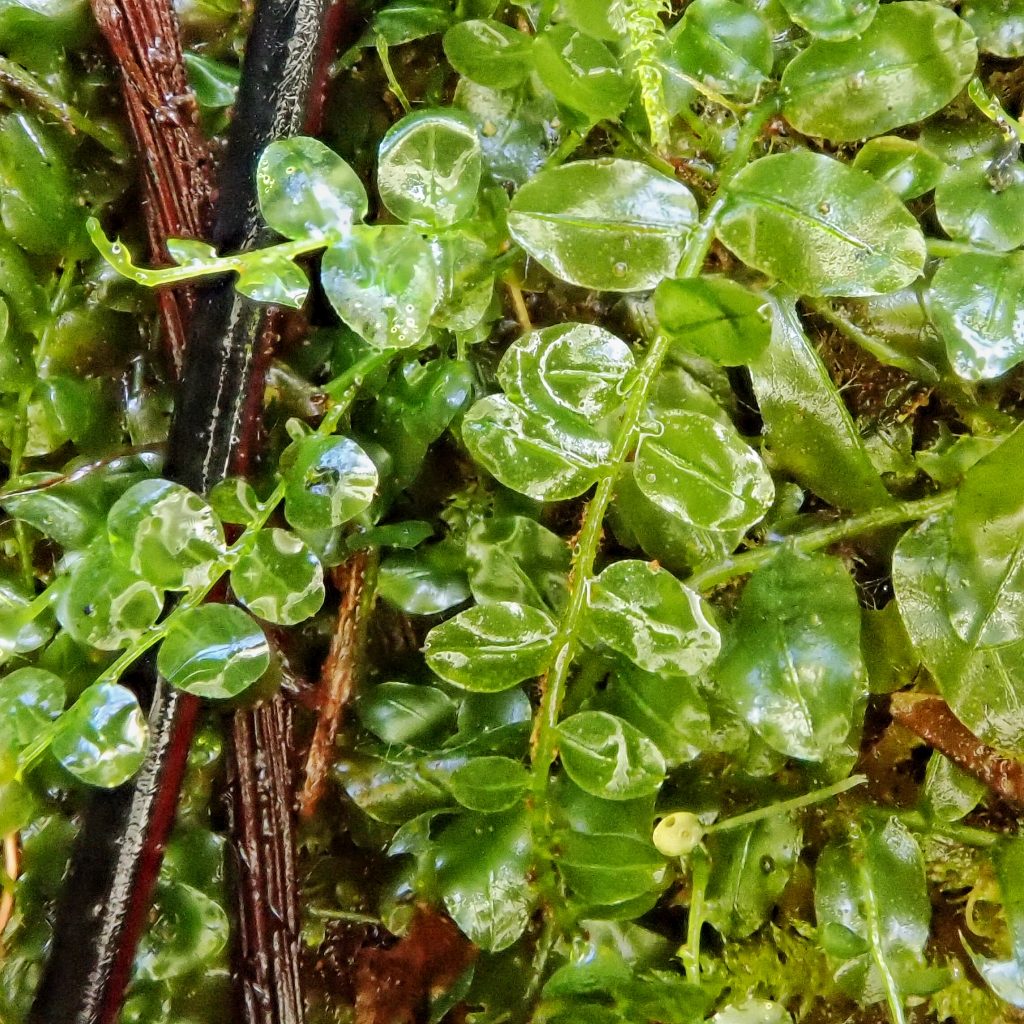
http://www.efloras.org/florataxon.aspx?flora_id=1&taxon_id=200001519
https://websites.rbge.org.uk/bbs/Activities/mosses/Plagiomnium%20rostratum.pdf
https://ucjeps.berkeley.edu/cgi-bin/get_moss_treatment.pl?taxon=Plagiomnium%20rostratum
http://fieldguide.mt.gov/speciesDetail.aspx?elcode=NBMUS81080
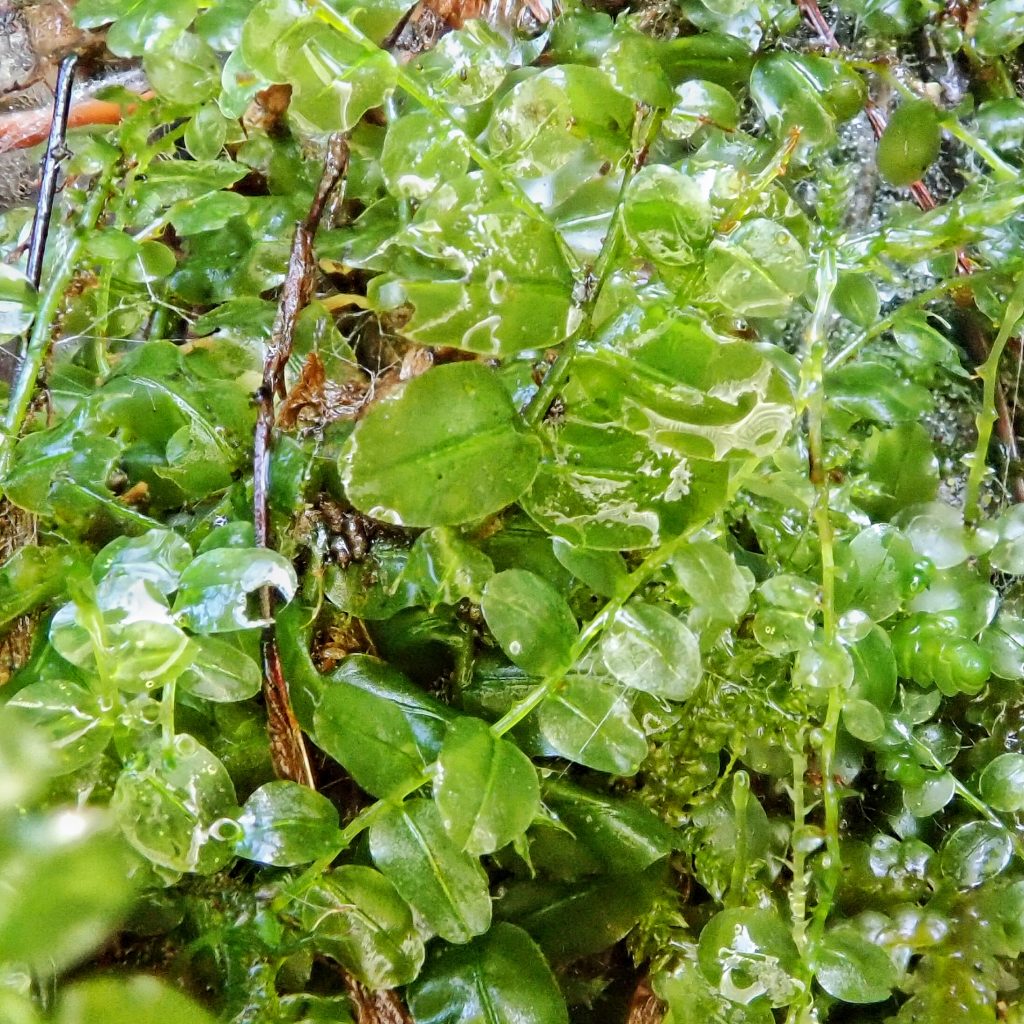
Thank you! 👍